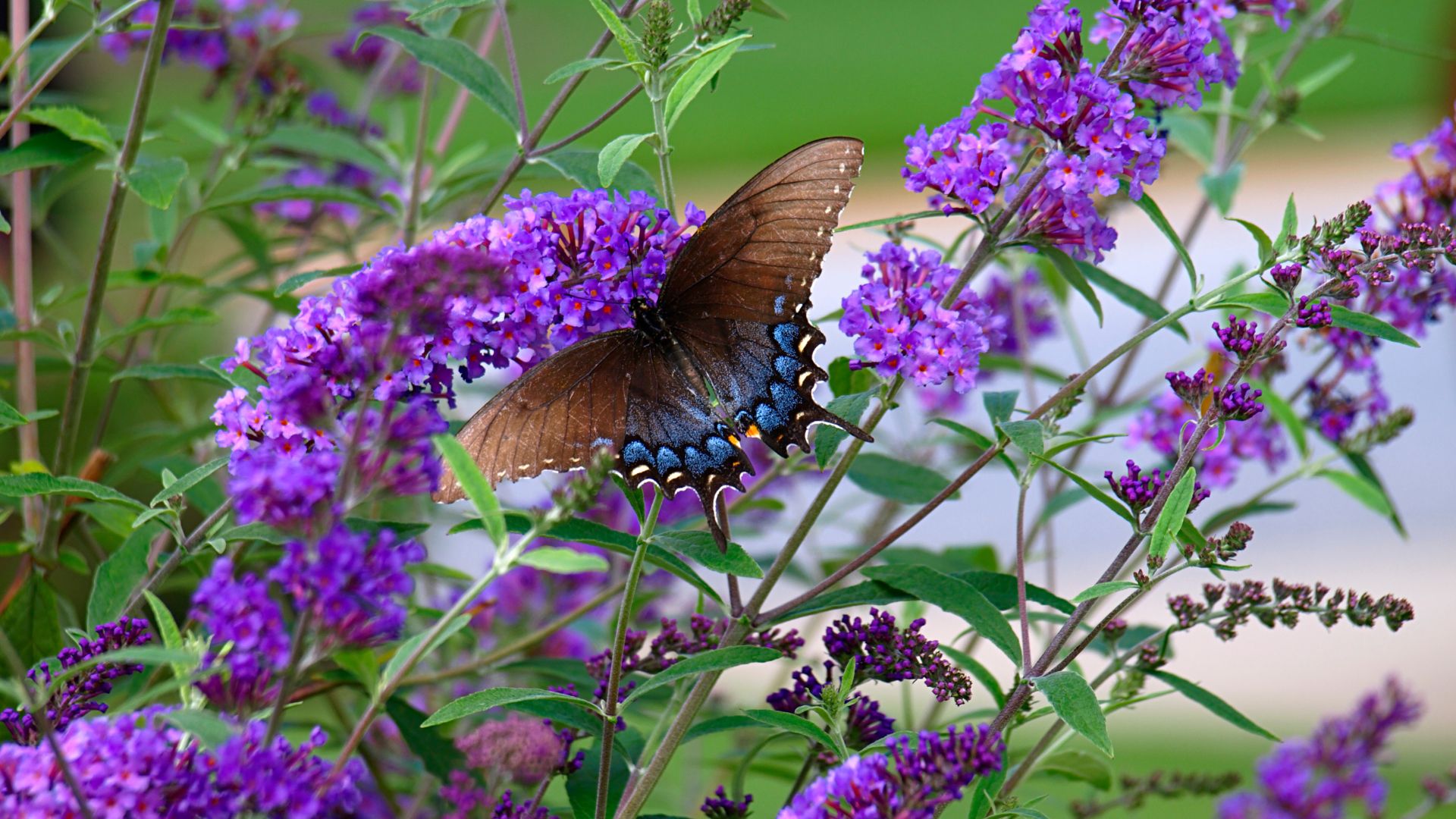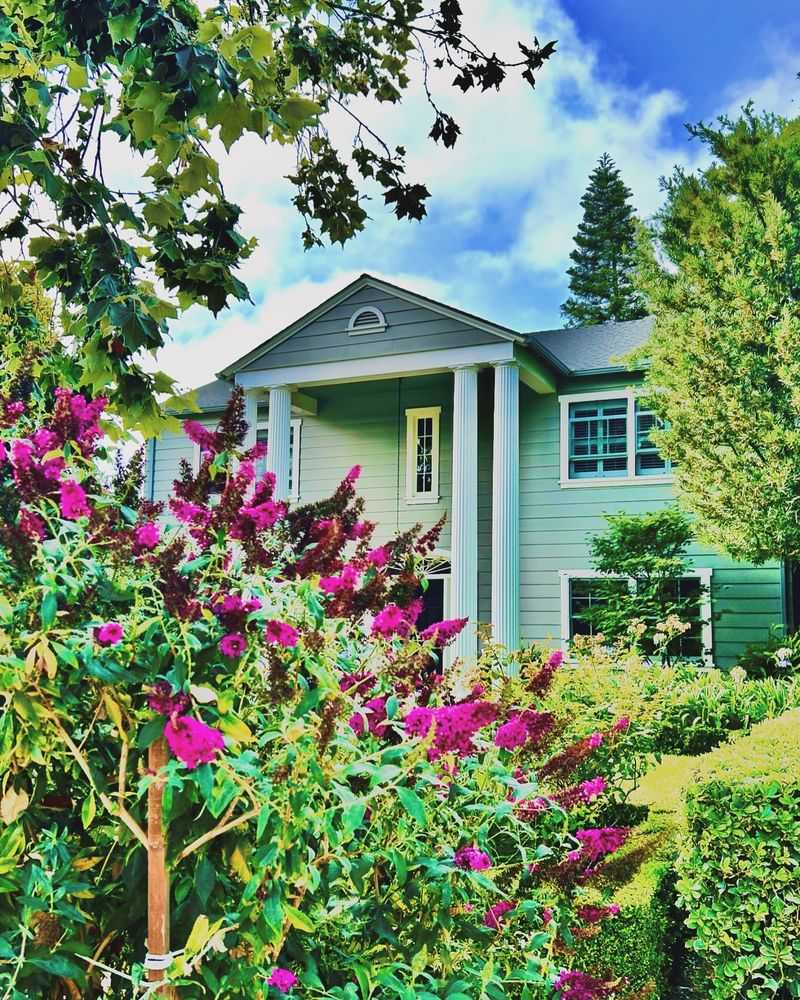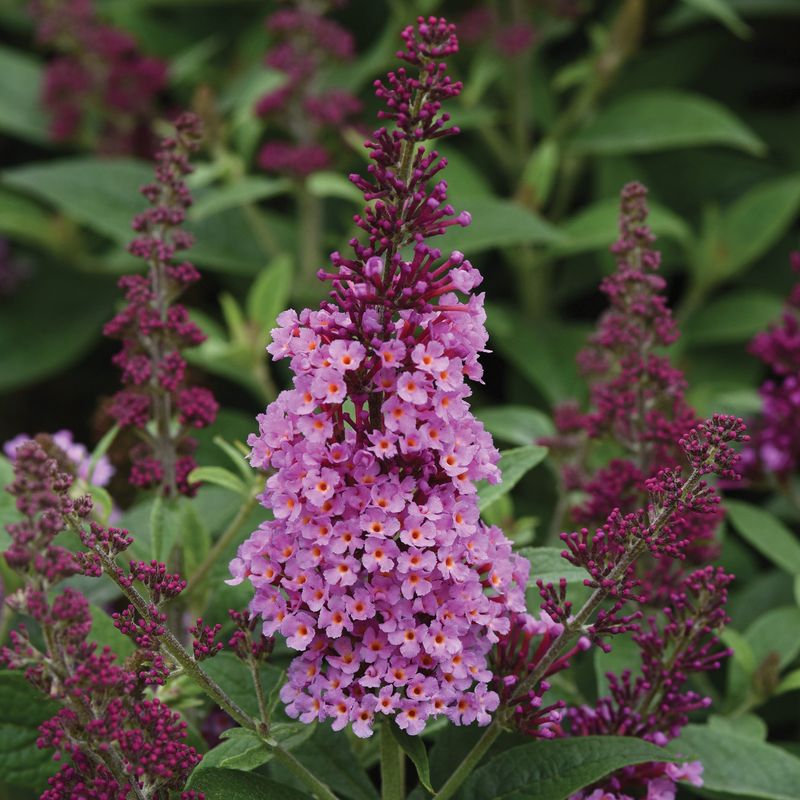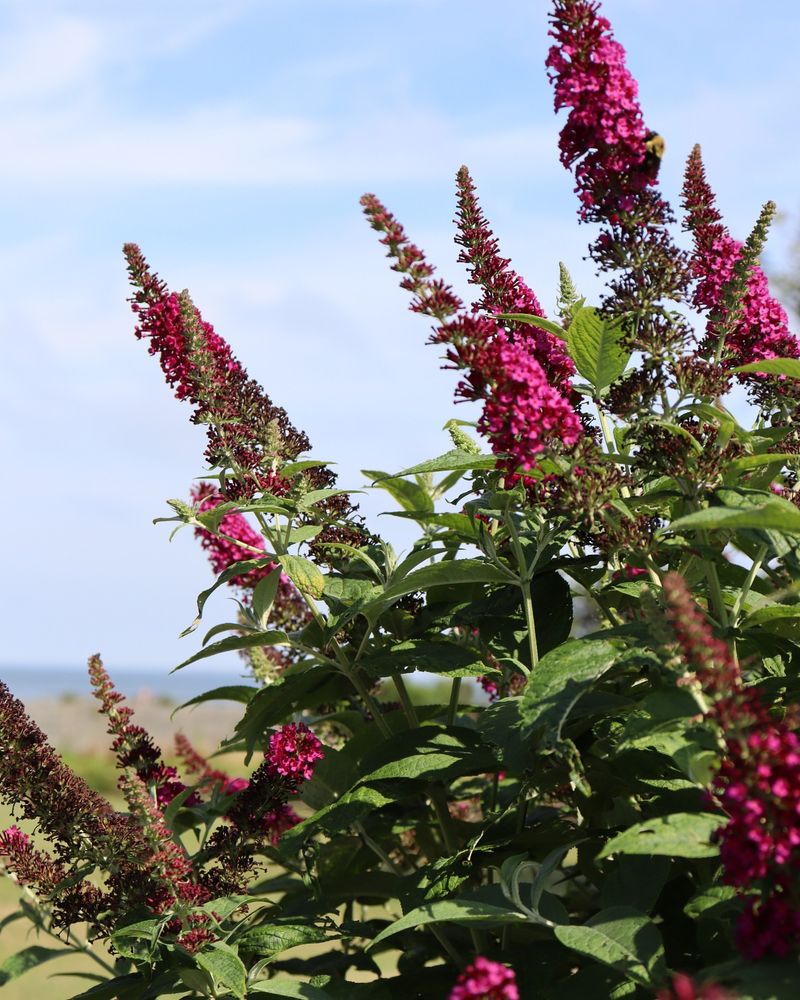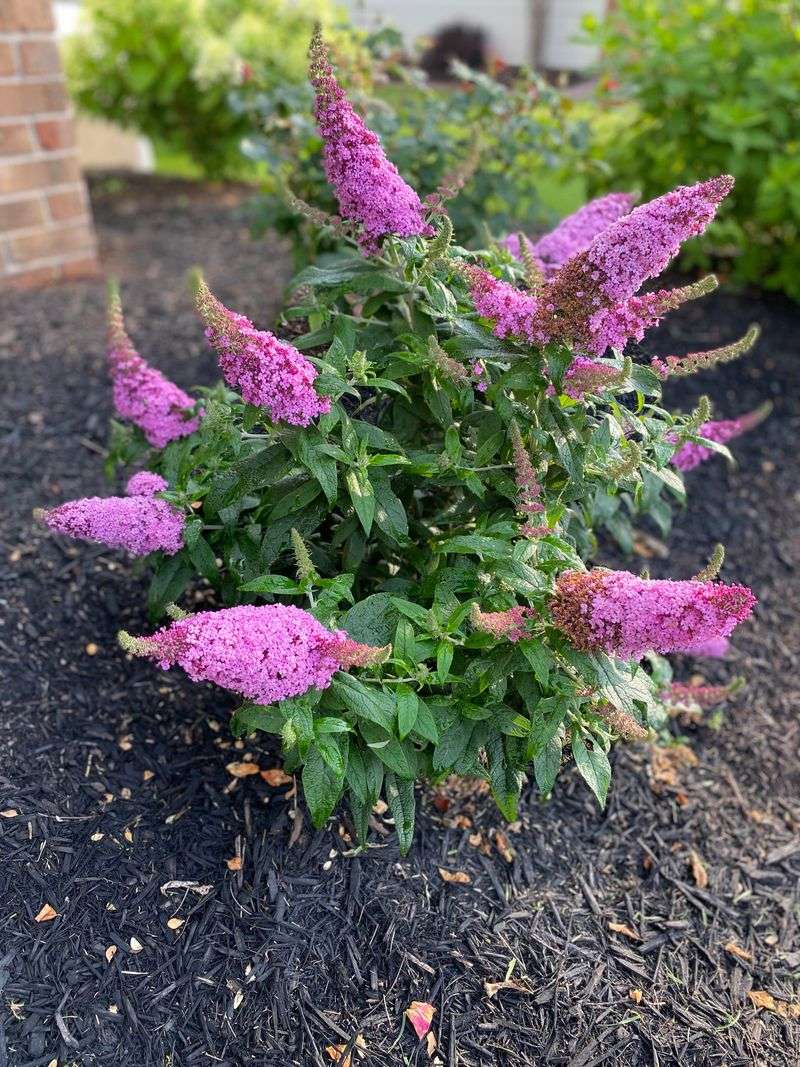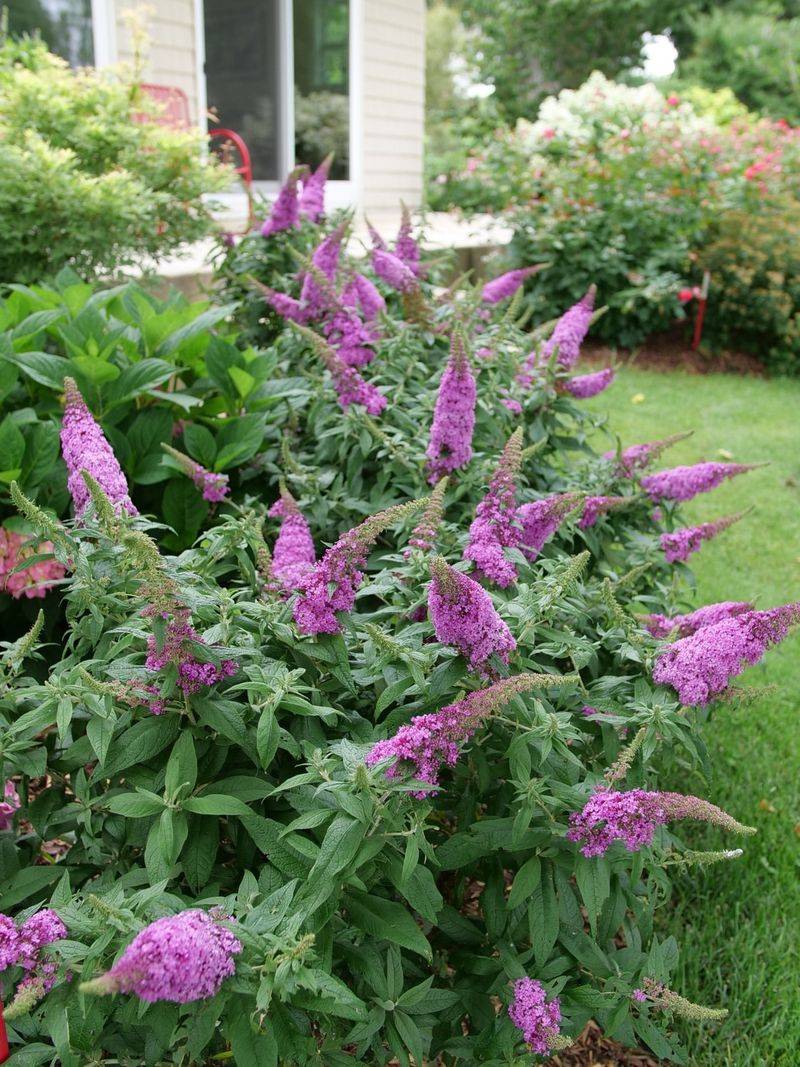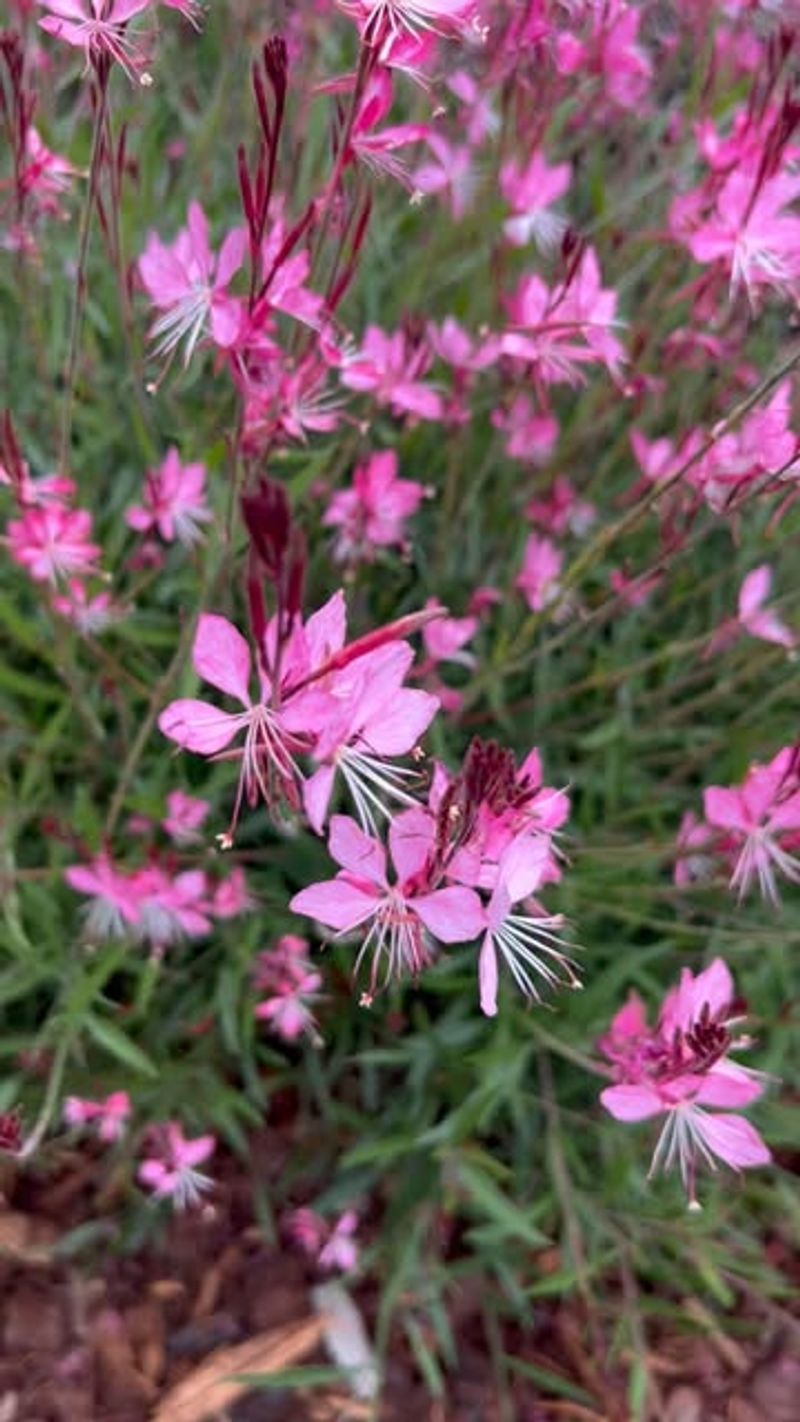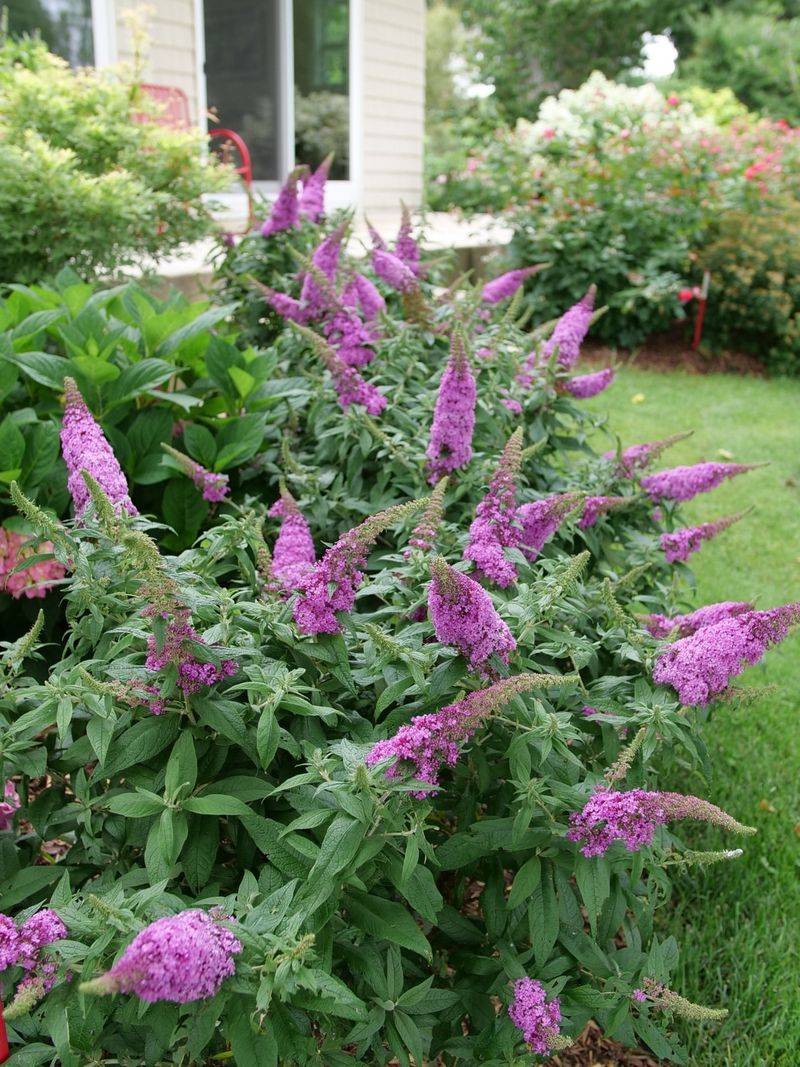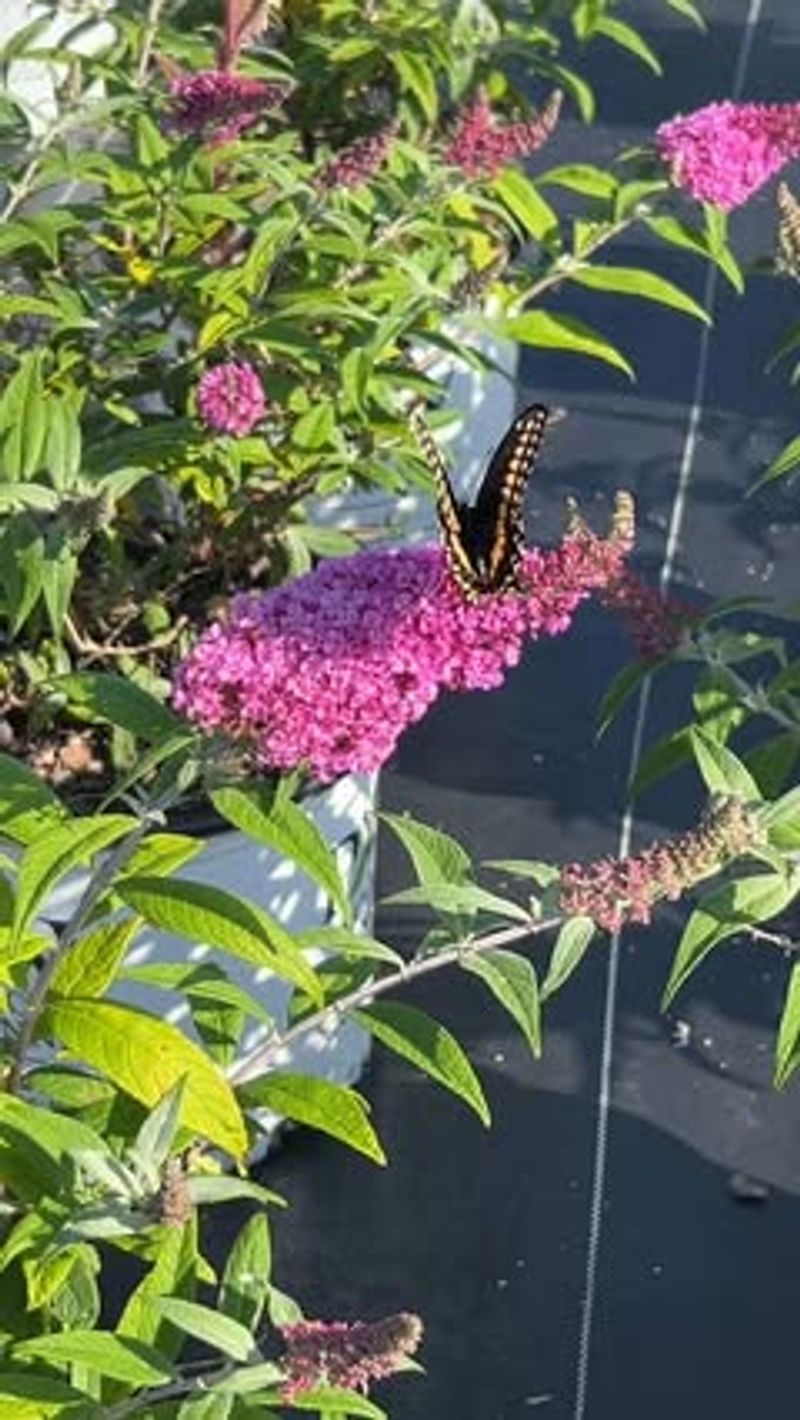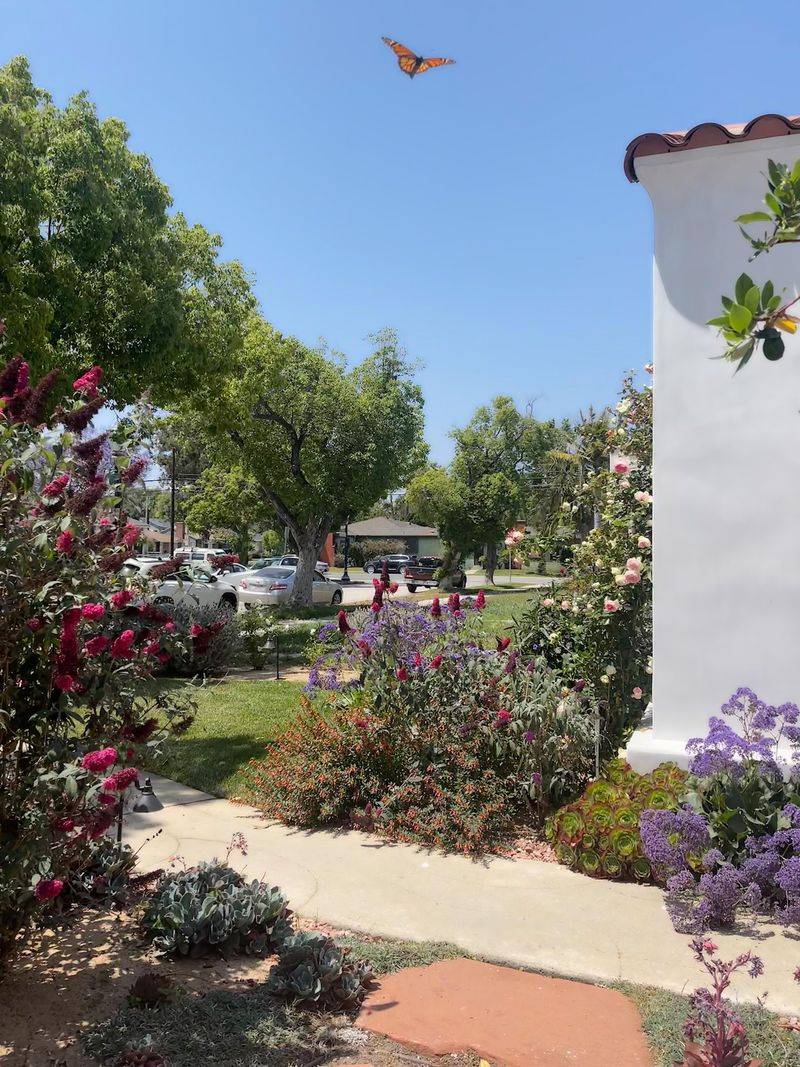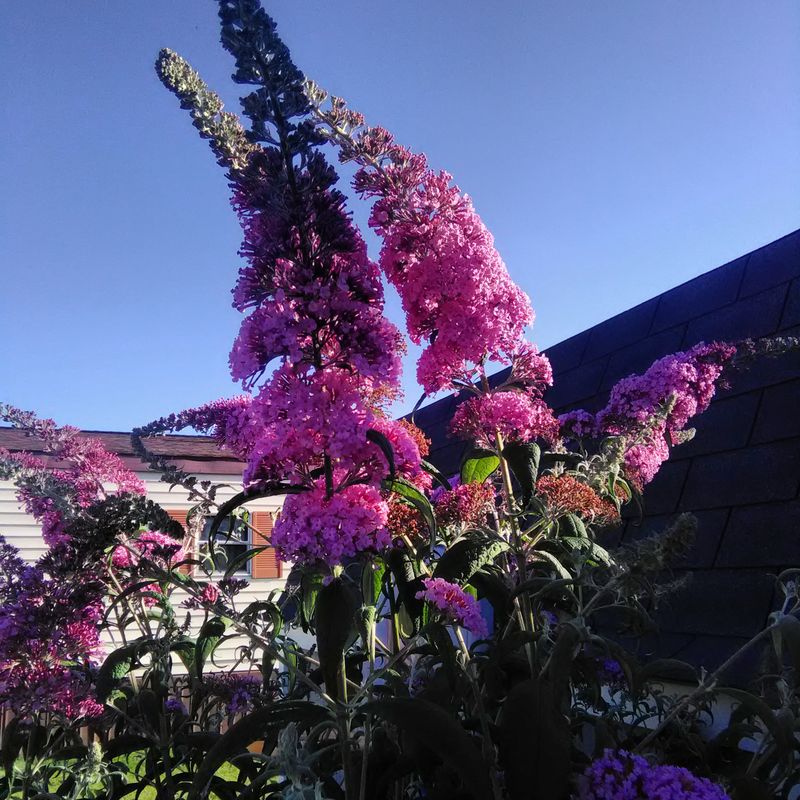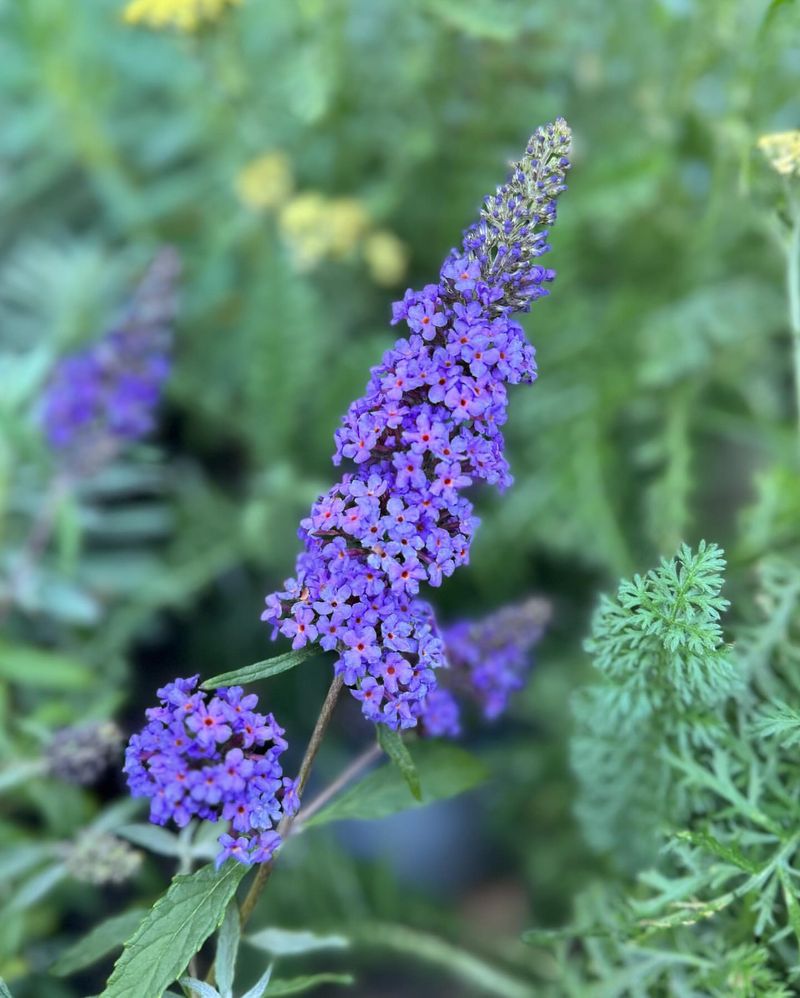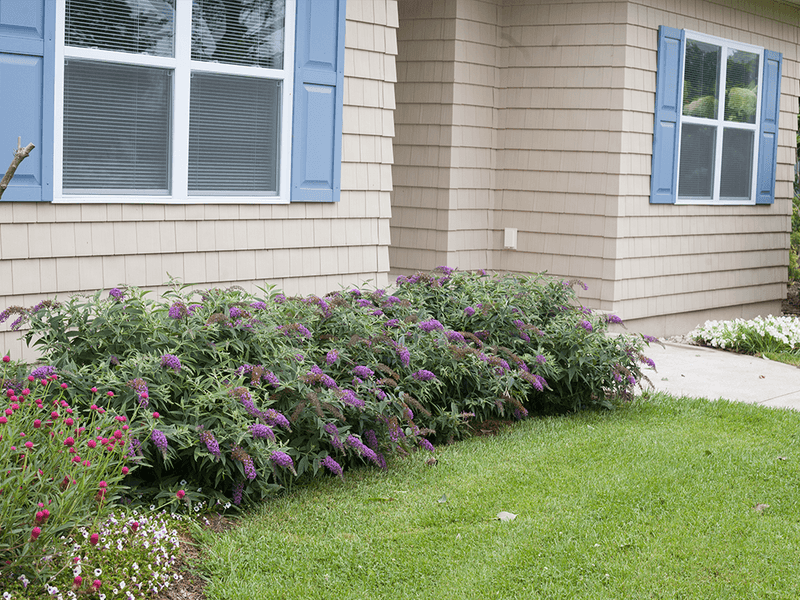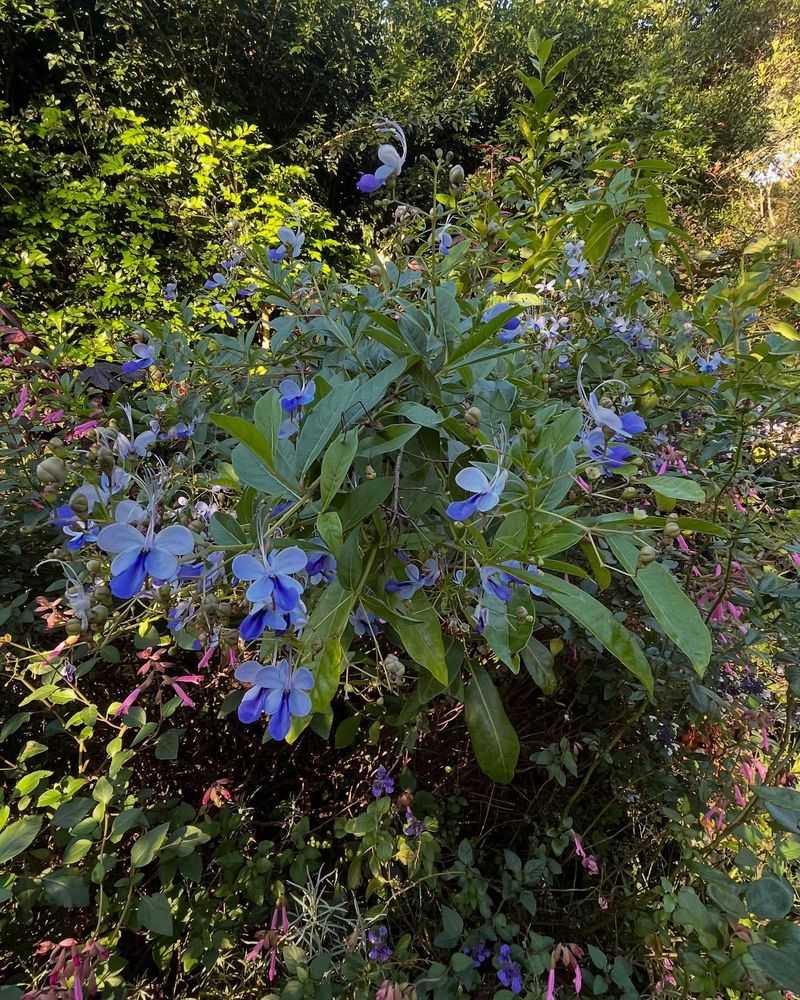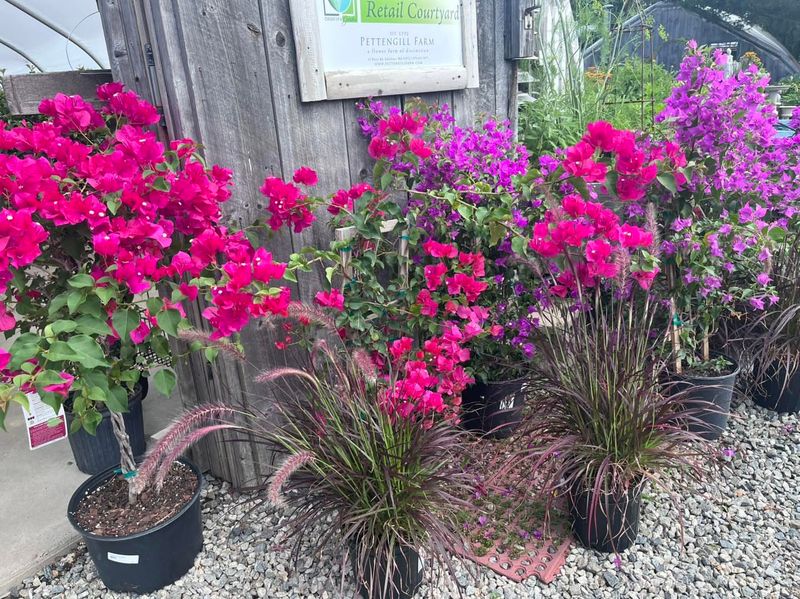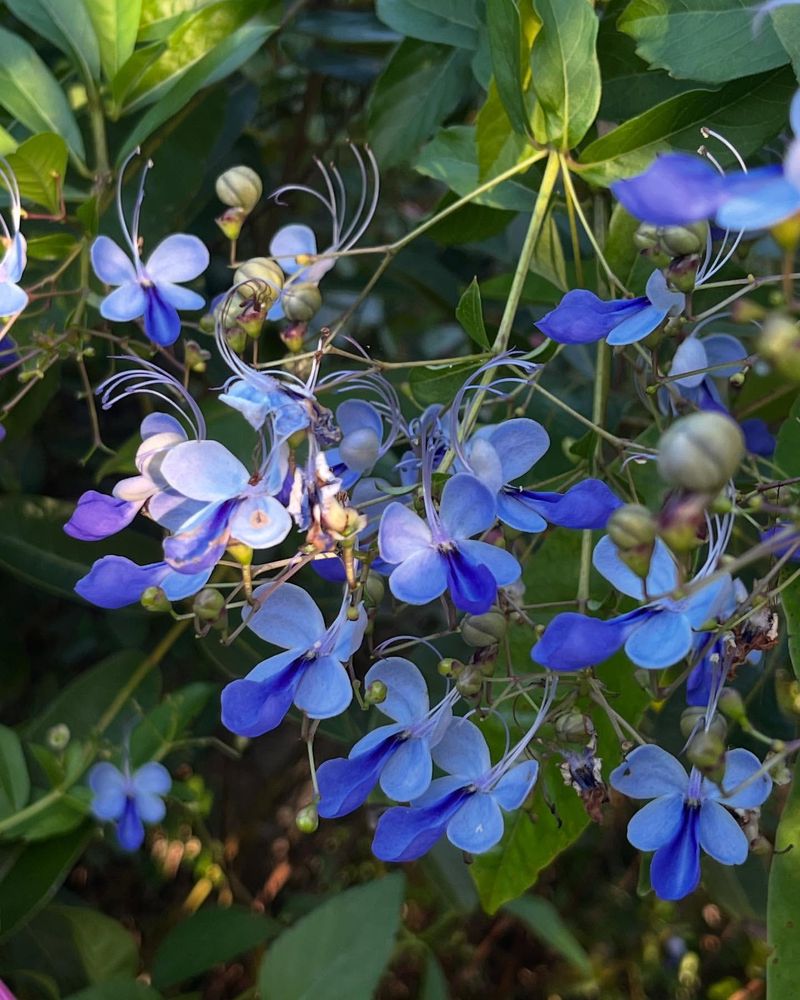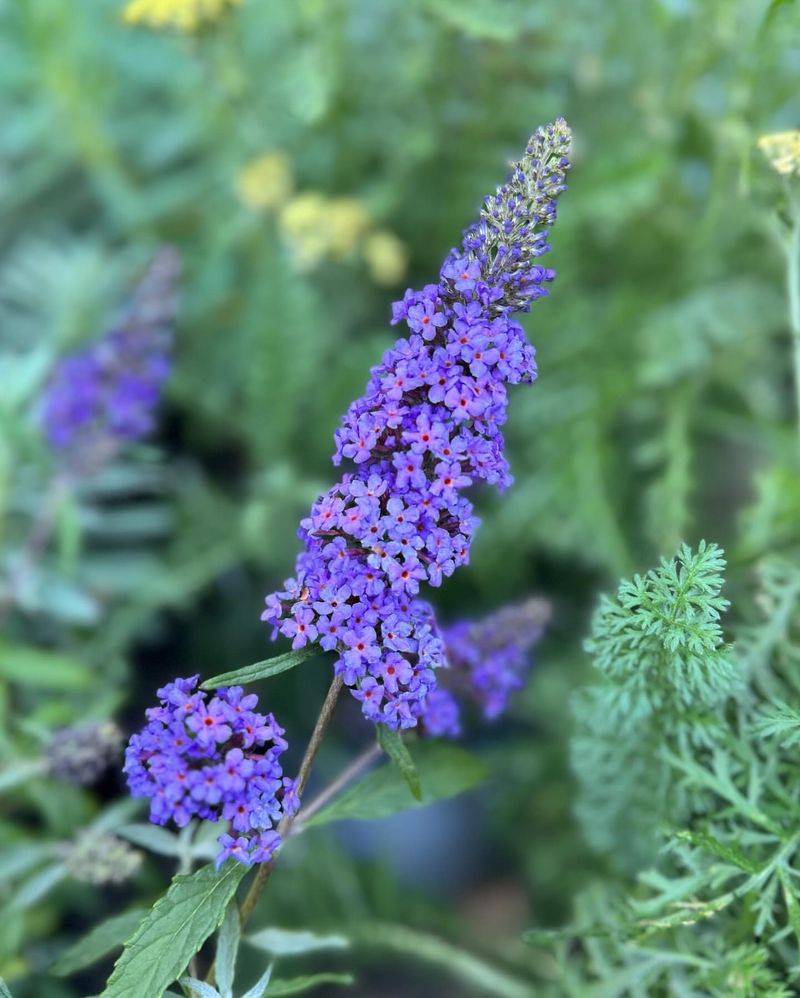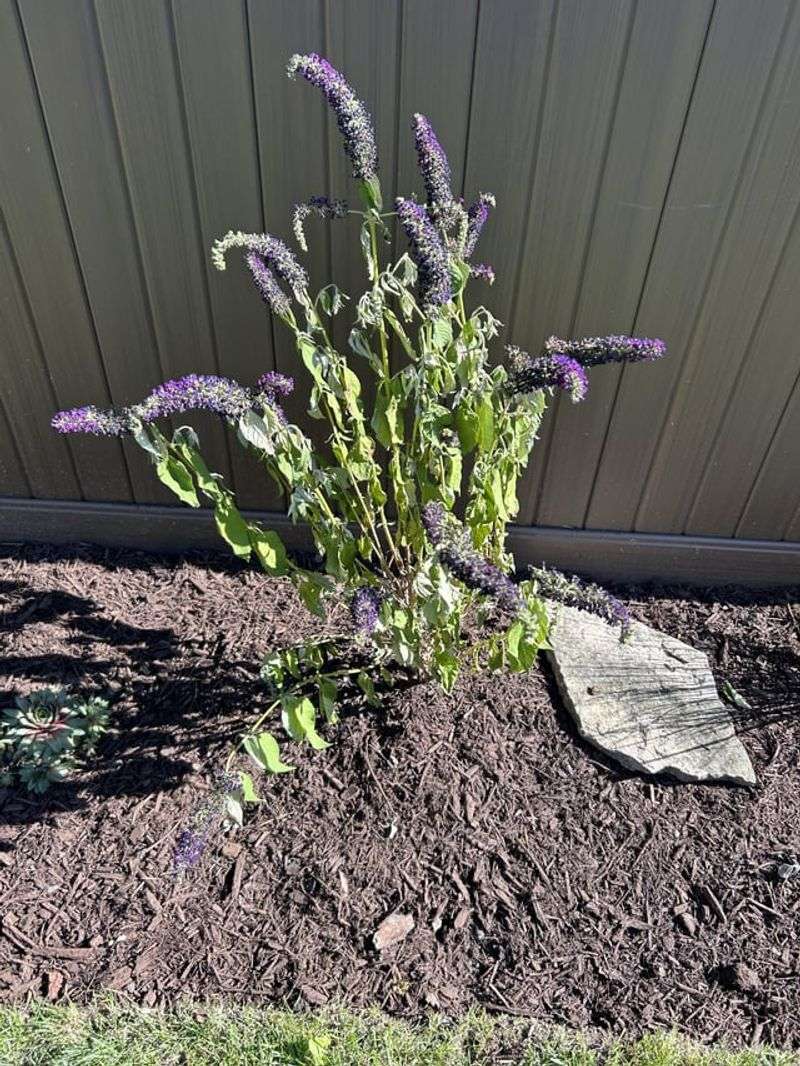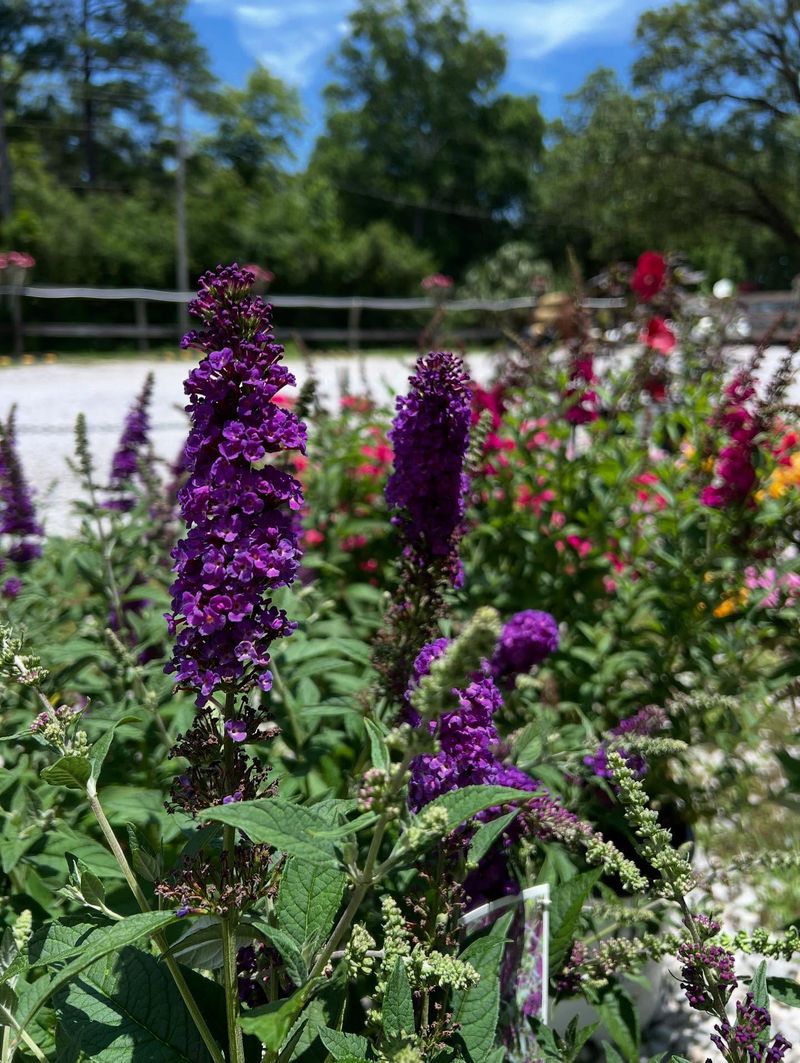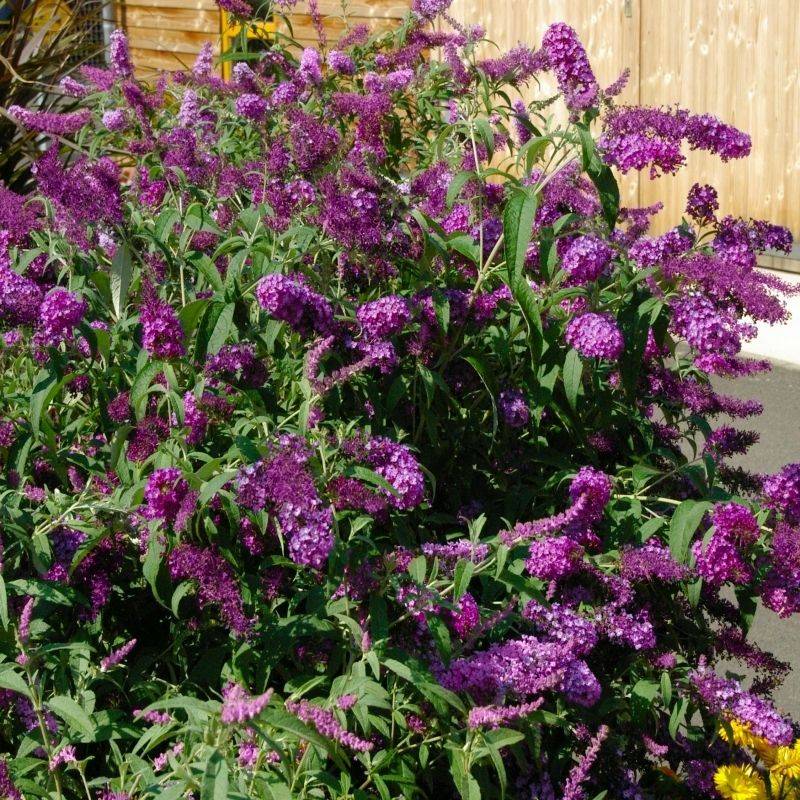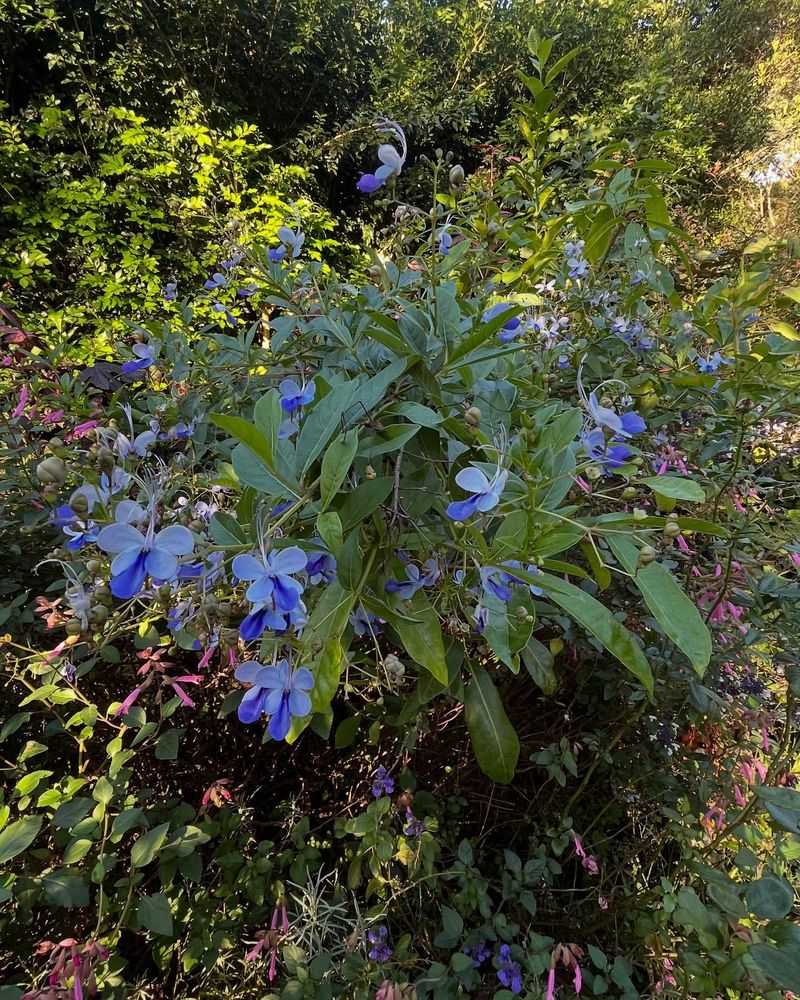Want your entryway to buzz with life and beauty? Butterfly bush (Buddleia) might be the answer. Its vibrant, nectar-rich blooms are magnets for butterflies, hummingbirds, and all sorts of helpful garden guests.
With impressive height and a carefree growing habit, it’s perfect for front yards where you want show-stopping color and wildlife appeal. It thrives in full sun, handles heat like a champ, and doesn’t ask for much in return.
Plant one and you’ll have a pollinator party all summer long—plus a stunning first impression for anyone stepping onto your property. It’s beauty and biodiversity, rolled into one graceful shrub.
1. Welcomes Guests With Colorful Blooms
Nothing says “welcome home” quite like clusters of purple, pink, or white flowers greeting visitors. The cone-shaped flower spikes create an immediate impression that your home is well-loved and cared for.
These blooms appear from early summer through fall in most regions, giving you months of color rather than just a few weeks. I’ve found guests always comment on them during summer gatherings.
Unlike annual flowers that need replacing, these perennial showstoppers return year after year with minimal effort on your part.
2. Attracts Butterflies To Your Doorstep
Watching butterflies flit around your entrance creates a magical experience for everyone who visits. The nectar-rich blooms act like a butterfly restaurant, drawing in monarchs, swallowtails, and dozens of other species.
My front walkway butterfly bush regularly hosts 5-6 different butterfly species at once during peak summer days. Kids especially love standing still and having butterflies flutter just inches from their faces.
This natural attraction works better than any doorbell, announcing visitors with a flurry of winged beauty.
3. Grows Quickly For Instant Impact
Many landscape plants take years to reach an impressive size, but not butterfly bush. You’ll see significant growth in just one season, often reaching 5-6 feet tall and wide by the second year.
For new homes or bare entryways, this rapid growth provides quick privacy and structure where you need it most. Last spring, I planted a one-gallon size by my front steps.
By August, it had tripled in size and was already attracting butterflies. Few plants offer such dramatic results in such a short timeframe.
4. Thrives In Hot, Sunny Entrances
Front entrances often face brutal sun exposure that wilts lesser plants. Butterfly bush actually prefers these hot, sunny spots that would scorch more delicate options.
During last summer’s heat wave, mine continued flowering while other plants struggled. The tougher the conditions, the more this plant seems to thrive – perfect for those south-facing doors that bake all afternoon.
Even in regions with 100°F summer days, it keeps blooming without complaint when given occasional deep watering.
5. Requires Minimal Watering Once Established
Entrance plantings often get neglected during busy times or vacations. Thankfully, established butterfly bushes develop deep root systems that require far less water than most flowering plants.
After the first growing season, weekly watering is typically sufficient even during summer heat. My entrance plants survived a three-week vacation with no supplemental water during a dry July.
This drought tolerance means less maintenance and worry about plants wilting while you’re away from home.
6. Creates Natural Privacy Screening
Front entrances sometimes need privacy without feeling closed off. The arching branches and dense foliage create a natural screen that obscures direct views while maintaining an open feel.
Strategically placed beside steps or walkways, they break sightlines from the street without creating a fortress effect. My neighbor planted three along her front porch, effectively blocking the view from passing cars.
Unlike formal hedges, the informal shape feels welcoming while still providing that crucial buffer between public and private space.
7. Stays Neat Without Constant Pruning
Unlike many flowering shrubs that quickly become scraggly, butterfly bush maintains a naturally pleasing shape with minimal intervention. Its vase-like form looks intentional rather than wild, even with just one annual pruning.
Entrance plantings should look tidy without becoming a weekend maintenance project. My front door specimen needs just one hard cutback in early spring to keep it looking pristine all year.
This natural neatness means you’ll spend more time enjoying your garden and less time maintaining it.
8. Offers Four-Season Visual Interest
Front entrances deserve plants that look good year-round. Even in winter, the distinctive branching pattern and seed heads create architectural interest when other plants disappear.
Spring brings fresh green growth, summer delivers non-stop flowers, and fall showcases the contrast between late blooms and autumn surroundings. I’ve noticed visitors appreciate my entrance plantings regardless of season.
Even in January, the silvery-gray stems stand out beautifully against red brick and provide structure when the landscape looks bare.
9. Blends With Various Architectural Styles
Finding plants that complement your home’s architecture can be challenging. Butterfly bush has a chameleon-like quality that works equally well with Victorian charm, modern minimalism, or rustic farmhouse styles.
The informal but structured growth habit bridges the gap between wild cottage gardens and formal landscapes. My craftsman bungalow looks perfectly matched with the purple varieties flanking the front steps.
Friends with contemporary homes have used the white-flowering types for a clean, architectural statement that complements their sleek lines.
10. Provides Vertical Element In Entrance Gardens
Entryways often lack height variation, creating a flat, uninteresting look. Butterfly bush quickly establishes a vertical presence, drawing the eye upward and creating dimension in otherwise flat foundation plantings.
This vertical element naturally directs visitors toward your door while creating visual interest. At my house, the tallest stems reach almost to the porch roof by midsummer.
When surrounded by lower-growing perennials or groundcovers, this height creates a layered, professional-looking landscape that frames your entrance beautifully.
11. Doubles as a Cut Flower Source
Having fresh flowers by your entrance means you’re never empty-handed when visiting friends. The long flower spikes make excellent cut flowers, lasting nearly a week in vases.
My entrance bushes provide bouquets from June through September. Cutting actually encourages more blooming, so you’re improving the plant while beautifying your home interior.
Morning harvesting yields the strongest stems and freshest flowers – a perfect task while waiting for the school bus or before leaving for work.
12. Handles Road Salt And Pollution Well
Front entrances near streets face tough growing conditions from winter salt spray and vehicle emissions. Butterfly bush shows remarkable resilience to these urban challenges when many other flowering plants fail.
The slightly fuzzy leaves seem to repel dust and pollution better than smooth-leaved plants. My driveway entrance specimen thrives despite being just 15 feet from a busy road.
This toughness means you’ll have successful plantings even in challenging front yard conditions where more sensitive plants would struggle.
13. Deters Unwanted Pests Naturally
Front entrances should be welcoming to people but not to pests. The aromatic foliage naturally repels many unwanted insects that might otherwise hover around your door.
Mosquitoes particularly dislike the scent, making your entrance more comfortable during summer evenings. We’ve noticed significantly fewer mosquitoes on our front porch since planting several bushes nearby.
While attracting beneficial pollinators, the plant somehow discourages the insects you’d rather not have greeting your guests.
14. Adapts To Container Planting For Flexibility
Renters and those with limited garden space aren’t left out of the butterfly bush benefits. Dwarf varieties thrive in large containers flanking doorways, creating an instant entrance garden that moves with you.
Container planting also lets you control the exact placement for maximum impact. My porch has concrete steps with no soil nearby, so large pots solved the problem perfectly.
The contained root system actually helps manage growth, keeping the plants more compact while still providing all the flowers and butterfly attraction.
15. Survives Winter Freezes Without Protection
Front yard plants need to handle winter without extensive protection that looks unsightly at your entrance. Butterfly bush roots survive impressively low temperatures, often down to zone 5 without special care.
Even when stems die back in northern areas, the plant reliably returns from the root system each spring. My Chicago-area entrance plantings have weathered -15°F nights with no special protection.
This cold hardiness ensures your entrance stays beautiful year after year without the disappointment of losing plants to winter damage.
16. Emits Subtle, Pleasant Fragrance
Walking through your entrance should engage all senses, including smell. The honey-like scent of butterfly bush flowers provides a subtle fragrance that won’t overwhelm but adds another dimension to your welcome.
Unlike some heavily scented plants that can be too much in close quarters, this gentle perfume is just noticeable enough. Visitors often pause at my front steps, trying to identify the source of the sweet scent.
Morning and evening bring out the strongest fragrance, perfectly timed for coming and going from home.
17. Recovers Quickly From Damage
Entrance plants sometimes face accidental damage from deliveries, children playing, or severe weather. Butterfly bush shows remarkable recovery abilities, quickly growing new branches even after significant breakage.
This resilience means temporary setbacks don’t create lasting eyesores by your door. Last year, a fallen branch damaged my front specimen, breaking several main stems.
Within weeks, new growth had filled in so completely that visitors couldn’t tell anything had happened. Few entrance plants bounce back from adversity so gracefully.
18. Struggles In Dense Shade
North-facing entrances with heavy tree cover create challenging conditions for butterfly bush. Without at least 6 hours of direct sunlight, plants become leggy with significantly fewer flowers – defeating their primary purpose.
The sparse blooms in shade also attract fewer butterflies and pollinators. I tried growing one on my deeply shaded side entrance and was disappointed by the results.
While they’ll survive in partial shade, you’ll miss out on the spectacular flowering that makes these plants special for entrances with good sun exposure.
19. Performs Poorly In Soggy Locations
Entrances with poor drainage or constant moisture spell trouble for butterfly bush. Their roots strongly prefer well-drained soil and can quickly rot in areas where water pools after rain.
Low spots near downspouts or areas with heavy clay soils often create these problematic conditions. My neighbor’s entrance planting failed completely when positioned where roof runoff created constantly wet soil.
While they tolerate occasional heavy rain, persistent wetness is their kryptonite – making proper site selection critical for entrance success.
20. Not Ideal For Tiny, Confined Spaces
Small townhouse entrances or tightly confined spaces can be overwhelmed by butterfly bush’s ultimate size. Even with annual pruning, the plants naturally want to reach 5-8 feet in all directions when happy.
Trying to constrain them in too-small spaces creates a constant maintenance battle. My attempt to use one in a narrow 3-foot side entrance required frustrating weekly pruning to keep the walkway clear.
For tight spots, dwarf varieties offer a better solution, or consider alternatives like smaller spireas that naturally stay more compact.

